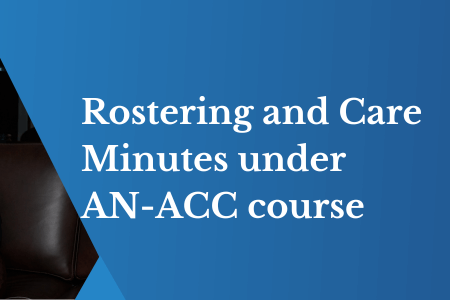Innovation in workforce management
September 23, 2024 | Aged Care Management

By Andrew Farmer, CEO and Partner
At the recent Aged Care Workforce Leaders conference in Sydney on September 11 and 12, we facilitated breakout sessions with senior aged care leaders who tackled some of the most pressing issues in workforce management in aged care sectors. With staff shortages, unplanned leave, and cultural challenges at the forefront, the workshop sessions fostered dynamic conversations around innovation and strategy. In this blog, we share some of those insights.
Session 1: Tackling casualisation and improving workforce culture
The first session delved deep into the challenge of casualisation. With the shift toward employee choice, many organisations find it difficult to balance a stable, permanent workforce with the flexibility demanded by casual employees. The COVID-19 pandemic further exposed weaknesses in workforce composition and exacerbated staff shortages, particularly in sectors that compete directly with hospitals and agencies for talent.
Participants brainstormed ideas to address these challenges:
- Reducing unplanned leave: One of the key takeaways was the idea of allowing some level of unplanned leave by implementing an “annual leave relief” system, ensuring coverage without compromising workflow.
- Improving culture: Recognising the link between culture and employee satisfaction, there were calls for establishing Employee Leadership Programs (ELP) to drive culture change from within.
- Shift Bidding and Roster Efficiency: Ideas around efficient rosters, including “shift bidding” where staff could have more control over their shifts, evolved into a more collaborative approach. Educating staff on the benefits of saving by over-rostering and pooling resources for relief were suggested to improve coverage and flexibility.
- Strategic Agency Use: One innovative idea was using agencies strategically by adopting a “try before you buy” approach, ensuring organisations can vet temporary staff before offering permanent positions. Complementing this was the concept of creating their own workforce through apprenticeships and student trainees.
Session 2: Reshaping workforce recruitment and retention
The second session shifted focus to finding and retaining staff. A competitive labour market, compounded by cultural and community infrastructure challenges, has made recruitment more difficult. The ideas from this discussion generated fresh perspectives on workforce recruitment and retention:
- Relief Teams: Building internal relief teams or casual pools was a top recommendation. The idea of a centralised call centre for on-call casuals was floated, allowing facilities to tap into a flexible workforce when demand spikes.
- International vs. Domestic Recruitment: While international recruitment remains an attractive option, participants also stressed the importance of attracting more domestic talent, focusing on core rosters and streamlining recruitment processes.
- Technology in Rostering: There was a strong push towards integrating AI into rostering systems, allowing real-time adjustments and greater flexibility. This could potentially ease onboarding processes and help facilities retain staff by providing more predictable and efficient schedules.
Session 3: Financial sustainability workshop: The role of technology and wellbeing
The final session focused on financial sustainability within the workforce. With agency costs on the rise, participants were keen to explore ways to reduce reliance on temporary staff and optimise internal processes through technology.
- Reduce Agency Costs: A key focus was on using technology to streamline workforce management. Solutions like AI-driven systems, SMS communication, and better integration of tech could help cut costs and improve efficiency.
- Care Management Productivity: Another innovative suggestion involved leveraging AI to manage care productivity, predicting care needs, and optimising revenue per staff member. AI could even be used to support nurses by freeing up time for more direct care responsibilities.
- Engagement and Retention: Recognising the importance of staff wellbeing, participants proposed wellness programs to boost engagement and retention. Drawing inspiration from leaders like Barack Obama, the “You Said/We Did” approach was suggested, giving employees a stronger voice and fostering a culture of feedback.
The ideas from these sessions offer a clear direction for improving workforce management across our sector. Leveraging technology, building better culture, and focusing on sustainable recruitment and retention practices can help organisations meet current challenges while preparing for future growth. Whether through strategic agency use, AI integration, or wellness programs, these innovations reflect a shared commitment to creating a more resilient and engaged workforce.
For more support and ideas on how to reduce agency cost and navigate AI, leadership and other innovative ideas to help address workforce challenges, speak to us today.
If you’d like to explore ideas for your workforce strategy, please get in touch.


